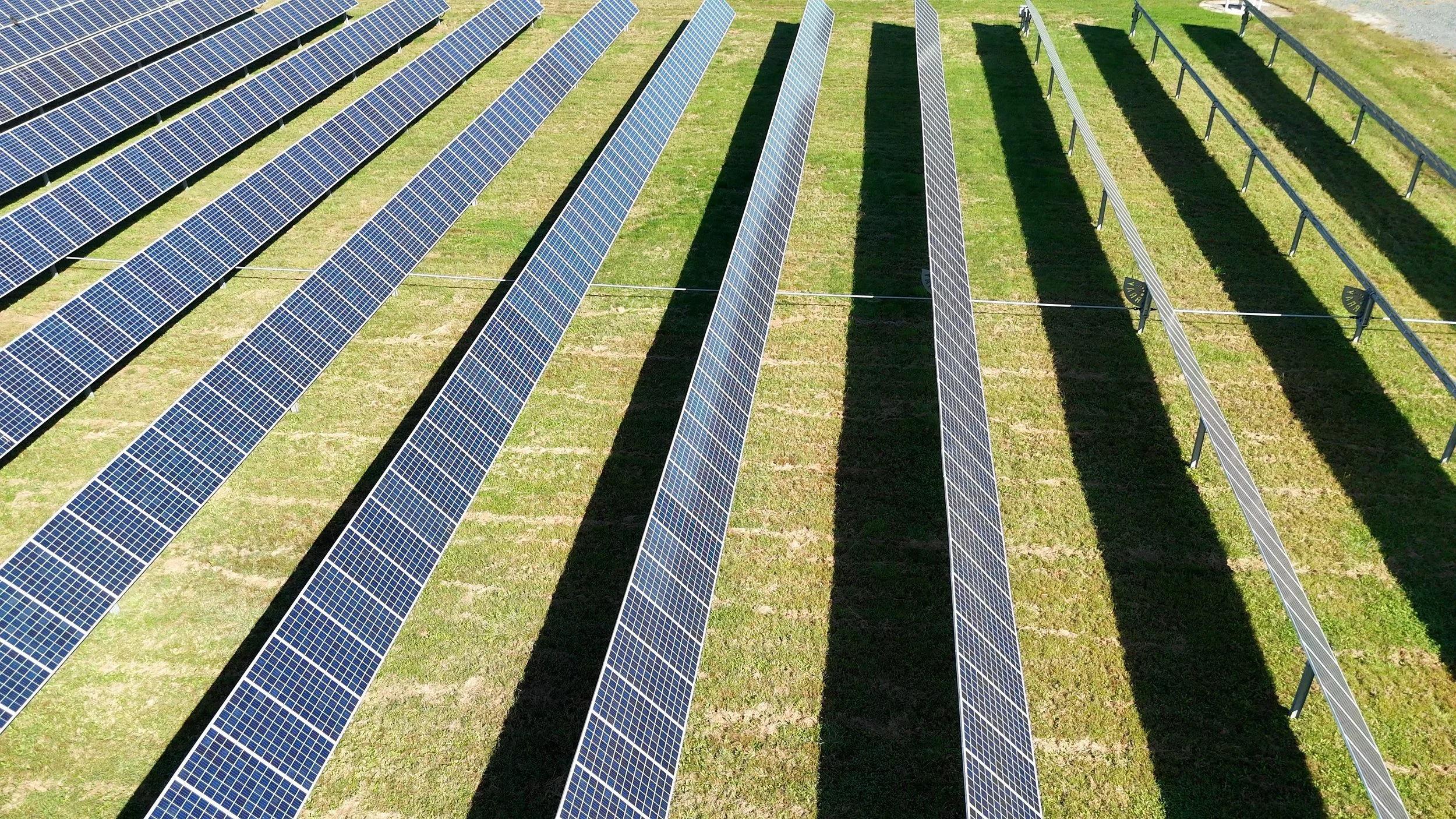
Maryland Solar Array Seed Mixtures
The state of Maryland has ambitious goals to convert 50% of electricity generation to renewable energy by 2030 and 100% by 2045. A “solar carve-out” within the Renewable Portfolio Standard (RPS) requires 14.5% of energy to come from solar by 2028. Approximately 2 million acres of the state is agricultural land, mostly for row crops, which happens to the be most appealing to solar developers. While land use for solar projects has sparked controversy, solutions like agrivoltaics and ecovoltaics have been proposed. Agrivoltaics allows for dual use of land, integrating crops and grazing alongside solar panels, while ecovoltaics focuses on enhancing ecosystem services, such as soil health and pollinator habitats. In Maryland, there is a particular emphasis on establishing native pollinator habitats beneath solar panels to benefit both the community and the agricultural landscape.
Chesapeake Valley Seed has been following the permitting requirements for vegetation establishment very closely in Maryland. The Maryland Public Service Commission (PSC) oversees the Certificate of Public Convenience and Necessity (CPCN) process that grants applicants photovoltaic generating stations. In this process, the Maryland Department of Natural Resources (DNR) is tasked with assessing each solar farm site by their Power Plant Research Program (PPRP). A complete site review is done by PPRP which then issues licensing conditions. Within these licensing conditions there are very specific requirements of vegetation establishment and management, not just in the development stage, but throughout the life of the project.
While each project has a different set of licensing conditions, one condition stays consistent – “Only native species may be planted”. The Renewable Energy Certainty Act that was passed into law in May of 2025 solidifies this licensing condition. Some licensing conditions go a step further in requiring the site to be planted with native grasses and native pollinator habitat friendly species. Chesapeake Valley Seed has complied all the data necessary to construct a seed mixture that checks all the boxes and keeps everyone in compliance with not only their CPNC but also with Maryland Department of Environment (MDE) sediment and erosion control standards.
Chesapeake Valley Seed consulted with several state agencies, local soil conservation districts, and the brightest minds in wildlife habitat creation in the state of Maryland to formulate this seed mixture. This low growing, native grass, and pollinator mixture contains species that are not only regionally specific to the Mid-Atlantic Region, but they also are widely available throughout the year. The pollinator value that this mixture provides once established will pay dividends for decades to come to the surrounding agricultural landscape.
